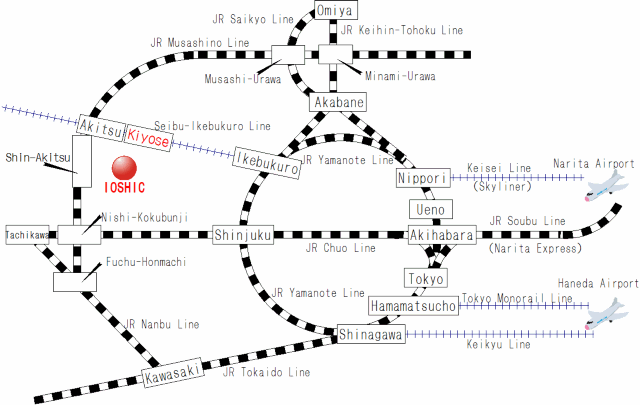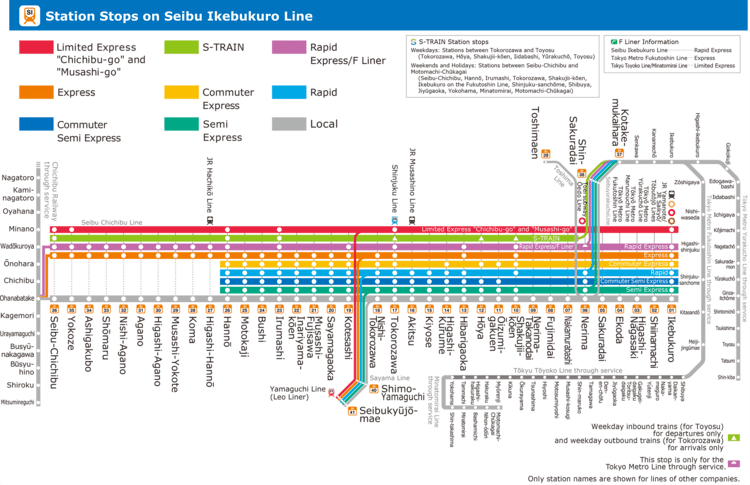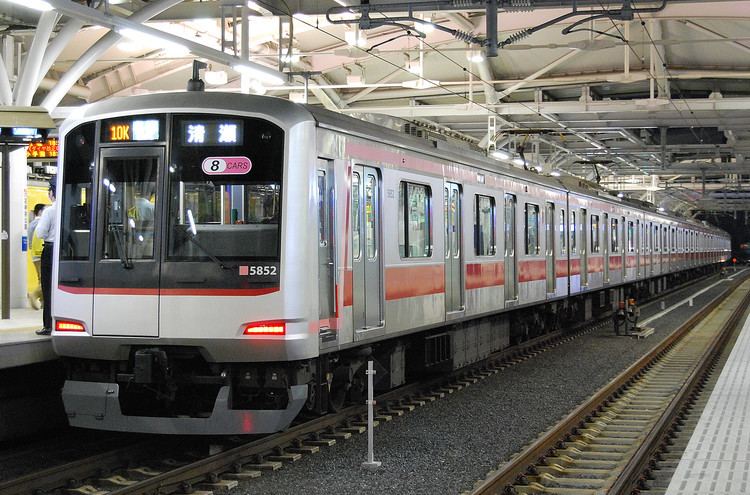Native name 西武池袋線 Stations 31 Opened 15 April 1915 | Locale Kanto region Daily ridership 892,025 (2010) | |
 | ||
Terminis Ikebukuro Station, Agano Station | ||
Japanese train ride tokyo seibu ikebukuro line
The Seibu Ikebukuro Line (西武池袋線, Seibu Ikebukuro-sen) is a railway line of the Japanese private railway operator Seibu Railway. It originates at Ikebukuro Station, a large railway junction in north-western Tokyo, extending to northwest suburbs as far as Tokorozawa, Saitama, and nominally terminates at Agano Station.
Contents
- Japanese train ride tokyo seibu ikebukuro line
- Japan railway seibu ikebukuro line 9000 series 9004 tokorozawa station 11 28 2013
- Branch lines
- Line data
- Service pattern
- Stations
- Rolling stock
- History
- References

The Seibu Chichibu Line from Agano to Seibu Chichibu Station is an extension. The operation is largely divided into two sections: from Ikebukuro to Hannō Station and from Hannō to Seibu Chichibu Station.

Japan railway seibu ikebukuro line 9000 series 9004 tokorozawa station 11 28 2013
Branch lines
The Ikebukuro Line has three branches with through operation, apart from the Seibu Chichibu Line.

Line data
Tracks:

Service pattern
Abbreviations here are for the table below, not formally used.

Stations
Local services are not shown.
Rolling stock

A fleet of eight 10-car Seibu 40000 series EMUs was introduced from 25 March 2017, operating on the Seibu Ikebukuro, Seibu Shinjuku, and Seibu Haijima Lines.
History
The line opened 15 April 1915 as the Musashino Line (武蔵野線, Musashino-sen) (separate from the Musashino Line currently operated by JR East), by the then Musashino Railway (武蔵野鉄道, Musashino Tetsudō), the predecessor of the present Seibu Railway with the first section from Ikebukuro to Hannō. In 1922, electrification began in three stages from Ikebukuro, until reaching Hannō in 1925. In the late 1920s, a second track was added from Ikebukuro to Hōya Station, and in 1929 the line was extended to Agano Station, the present nominal end. On March 25, 1952, the line was renamed to the Ikebukuro line, and throughout the 1950s and 1960s, the 2-track section was extended in stages until reaching Kasanui yard in 1969.
In 1969, the Seibu Chichibu Line was completed to Seibu Chichibu Station to begin through operation from Ikebukuro; in 1989, bypass tracks were laid to the Chichibu Railway Main Line; and in 1998, through service via Seibu Yurakucho Line of Seibu to the Tokyo Metro's Yurakucho Line began to Shinkiba Station.
In 2001, a second track of 350 m was built to complete the double-track section from Ikebukuro to Hannō. At the same time, the elevated 4-track section from Nerima-Takanodai to Nakamurabashi opened. This elevated 4-track section was extended to Nerima in 2003.
Station numbering was introduced on all Seibu Railway lines during fiscal 2012, with Seibu Ikebukuro Line stations numbered prefixed with the letters "SI".
From 10 September 2012, 10-car 5050-4000 series sets entered revenue service on the Seibu Ikebukuro Line and Seibu Yurakucho Line, with inter-running through to the Tokyo Metro Fukutoshin Line.
From 16 March 2013, through running via the Tokyo Metro Fukutoshin Line commenced beyond Shibuya over the Tokyu Toyoko Line and Minatomirai Line to Motomachi-Chukagai in Yokohama.
